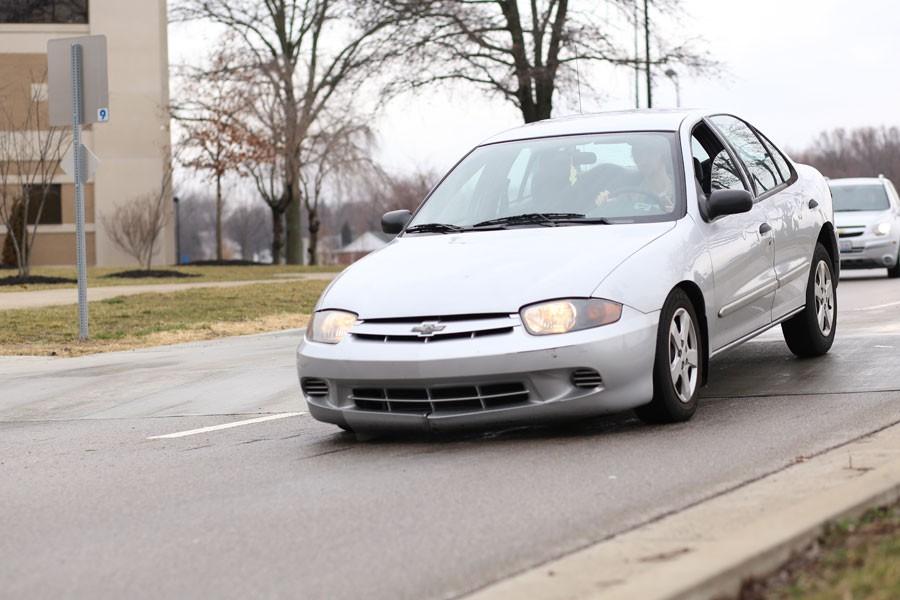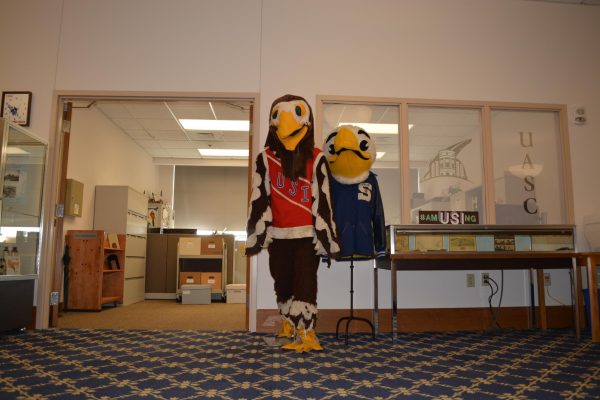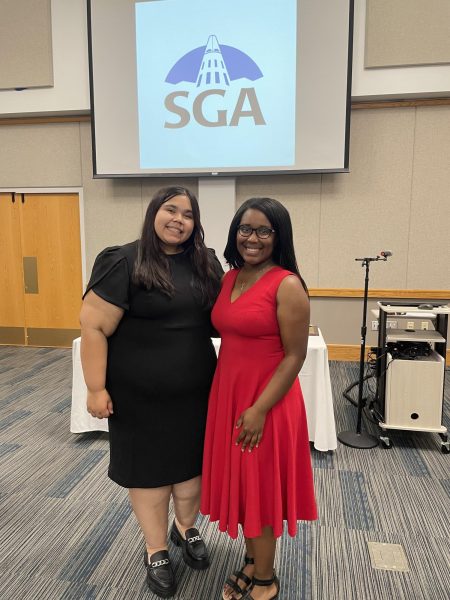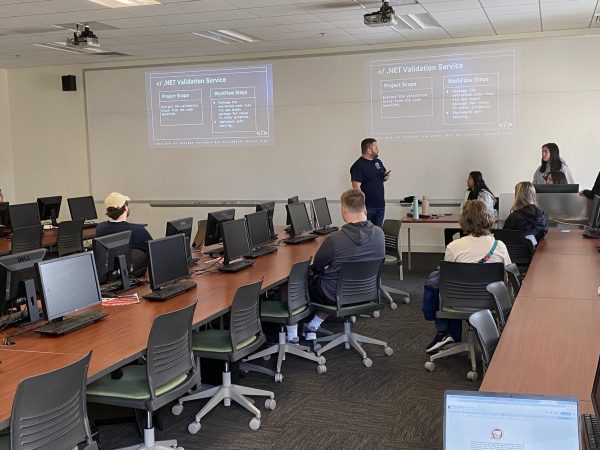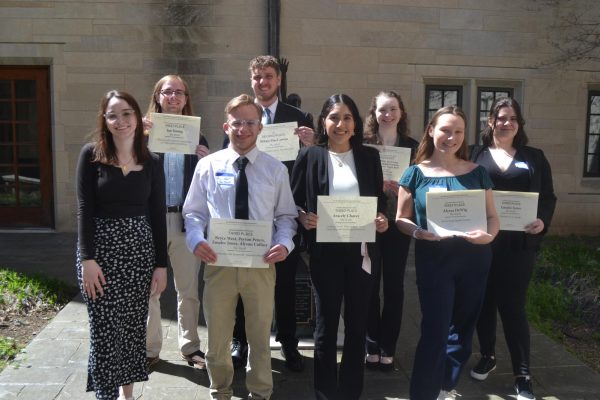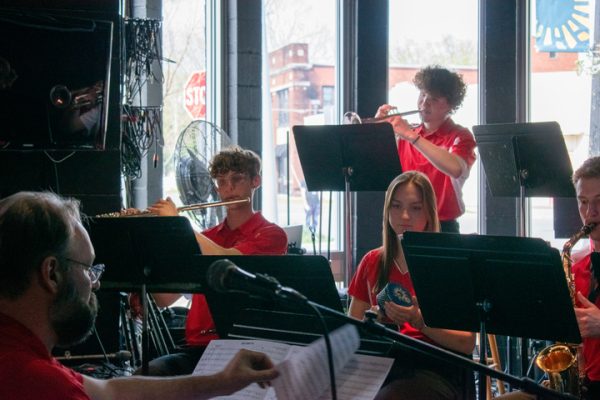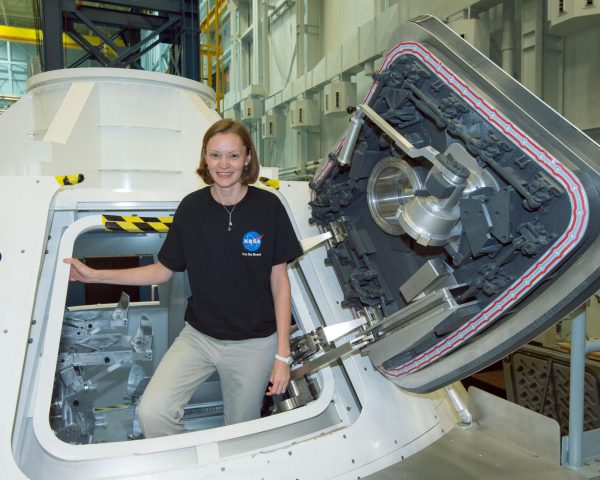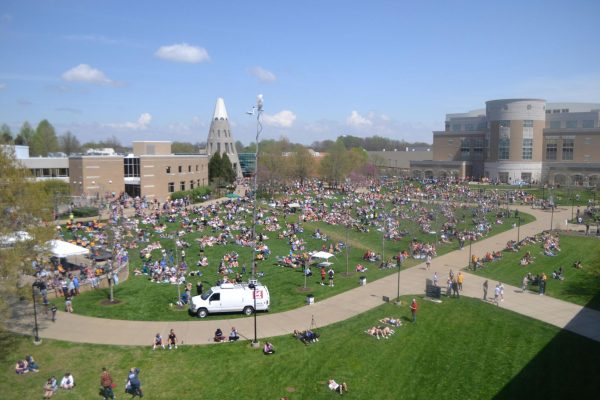Drivers talk new speed bump
Ashley Harris, senior administrative assistant at Distance Learning, said the bump outside the Health Professions Center is too high. Despite her driving a standard Mitsubishi Sedan, she feels she is on the verge of bottoming out as she crosses it.
Since the installation of the speed bump on Jan. 6, students have had varying opinions about whether or not it is doing more harm than good.
Harris arrives on campus early in the day and notices a traffic backup through the roundabout every morning.
“I think it’s more employees when they come in the morning, since you have such a high number all at one time because everybody starts at 8 (a.m.),” Harris said. “I’ve seen it backed up at least two or three times since they’ve put it in, and I mean backed up to the next stop part of the circle.”
She said she understands the concern for speed, but she feels the bump in front of the Health Profession Center is much higher and more sudden than the one in front of the Orr Center.
But, she said, the bump is easily noticeable and there is enough time to slow down.
Junior computer information systems major Jacob Brame said one has to roll over the bump at a stop to feel safe going over it.
Brame drives a Ford Focus and said it is dangerous to traverse the bump.
“I noticed whenever you’re getting the pre-11 a.m. rush, you’ll see it backed up all the way down to the last stop sign over by the overpass,” Brame said.
Freshman Jenny Pike said she is grateful the speed bump was added and notices the speed difference of the people going over it.
Pike commutes each day from Henderson, Kentucky, and said the bump was a shock the first time she went over it.
Since then, she said she has grown accustomed to its existence and instinctively knows it is there.
“It probably shouldn’t be as high as it is. It could still do its job not as high,” Pike said. “I’ve heard a lot of negative things about it, not really anything positive, but I can see both sides.”
The university installed another speed bump in front of the Children’s Learning Center as well.
This bump is considerably smaller and is one some students, such as Brame, Harris and Pike, said they have either not noticed or simply have no qualms about.
For Vice President for Finance and Administration Steve Bridges, the Children’s Learning Center speed bump is one he is closely analyzing.
Since starting his career here at the university in 1989, Bridges said he has seen people hit on the crosswalks. His office received complaints from pedestrians on the crosswalks.
Bridges said it was emergent in the fall that something needed to be done.
Since winter break is the longest amount of time with limited students, the university decided to build the speed bump at the end of this year’s break.
The university engineers and Public Safety determined the height of the Health Professions Center speed bump.
“At 15 miles per hour, it shouldn’t be a problem at all,” Bridges said. “The vehicle I drive is not particularly high profile. I would rate it as low profile, and I don’t have any issues.”
When the weather warms up, crosswalk lines will be added to increase visibility, Bridges said.
Currently, there is a “bump” sign and a speed limit sign to inform drivers of the speed bump. The sign for the recently installed speed bump is significantly smaller than the one in front of the Orr Center.
One of the main reasons for the height of the bump is the traffic that occurs around it. Since it is a high traffic area into and out of the university, ensuring drivers slow down to maximize safety was essential, Bridges said.
Bridges said the speed bump outside the Children’s Learning Center was purposely made lower than others to allow equipment to cross over it, but drivers are still not slowing down.
“We’re constantly evaluating safety and flow of traffic,” he said. “We’re going to look at other options because that one we’re still experiencing more speed than we’d like to see.”
In addition to the new bumps, Bridges said other areas are also being looked at to see if safety is an issue.
“We want to slow down traffic, but we’re also trying to be sensitive to it being such stop and go almost,” he said.
In order to combat fast drivers, Bridges said other options may be implemented across campus, such as more frequent, but not-as-high speed bumps, or making the road rougher to bring attention to drivers.
“I have no plans to make a change (on the speed bump),” Bridges said. “It’s not backing up traffic over the overpass, it’s slowing traffic coming onto campus and it’s slowing traffic as they exit campus, so I’d rate that as a pretty big success.”

